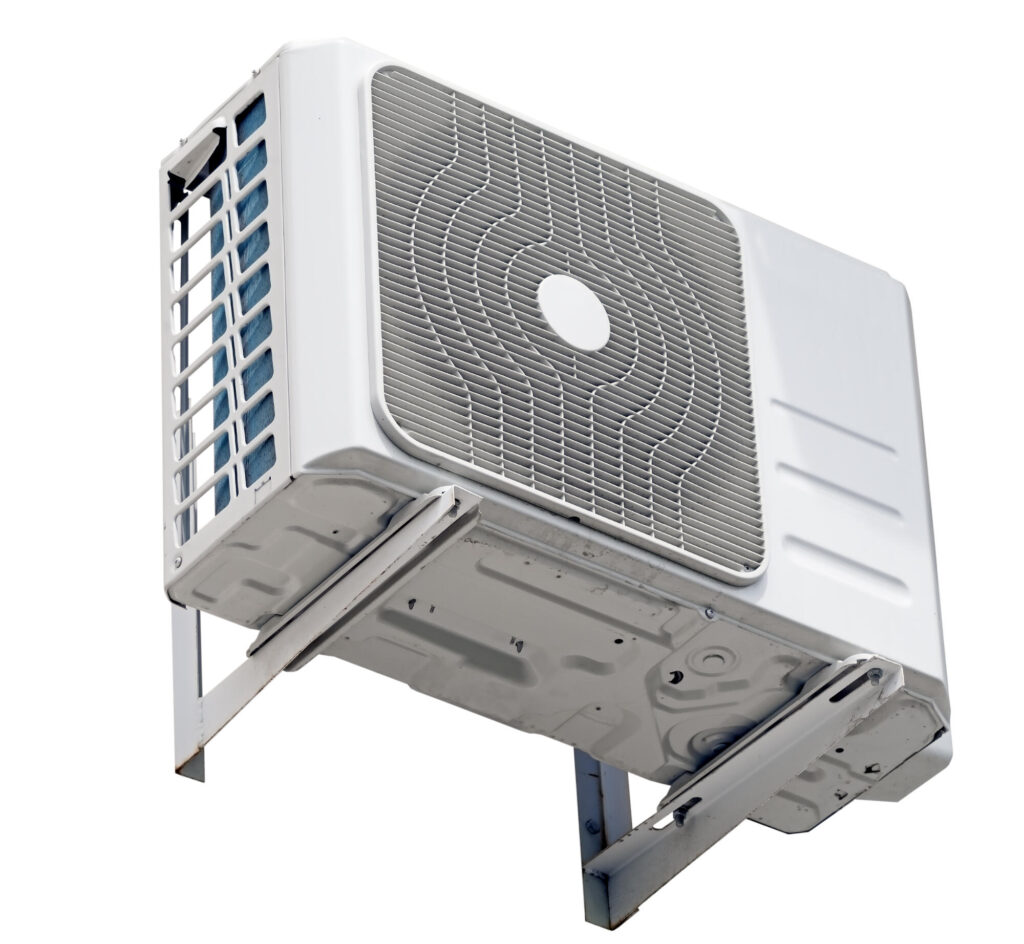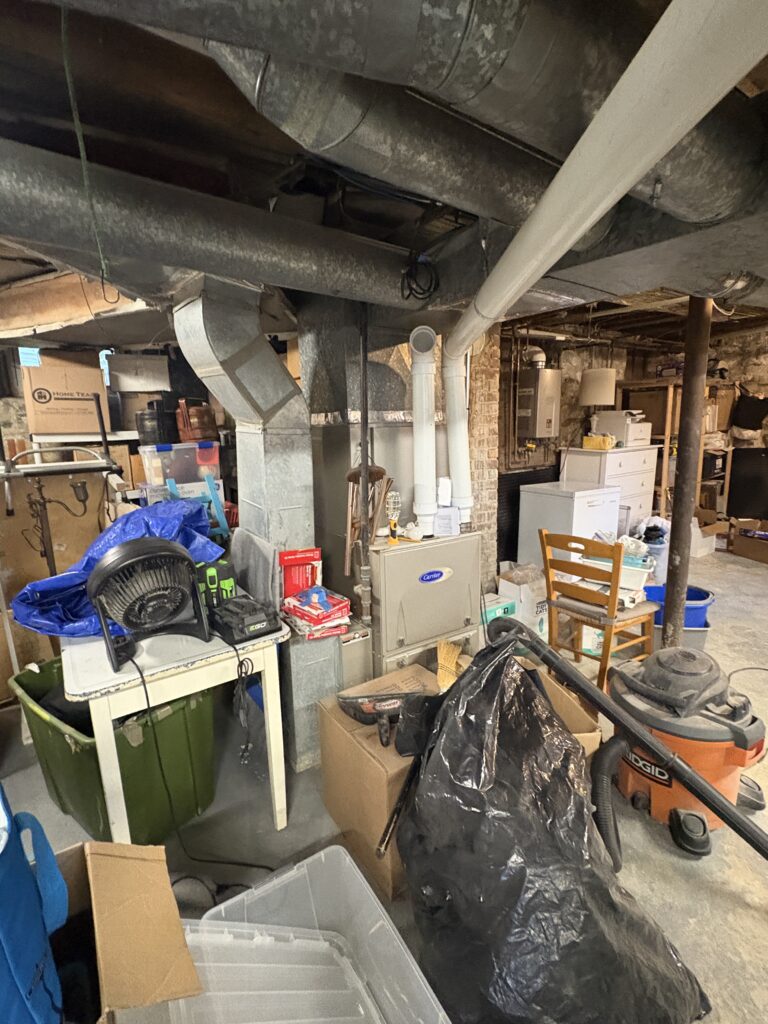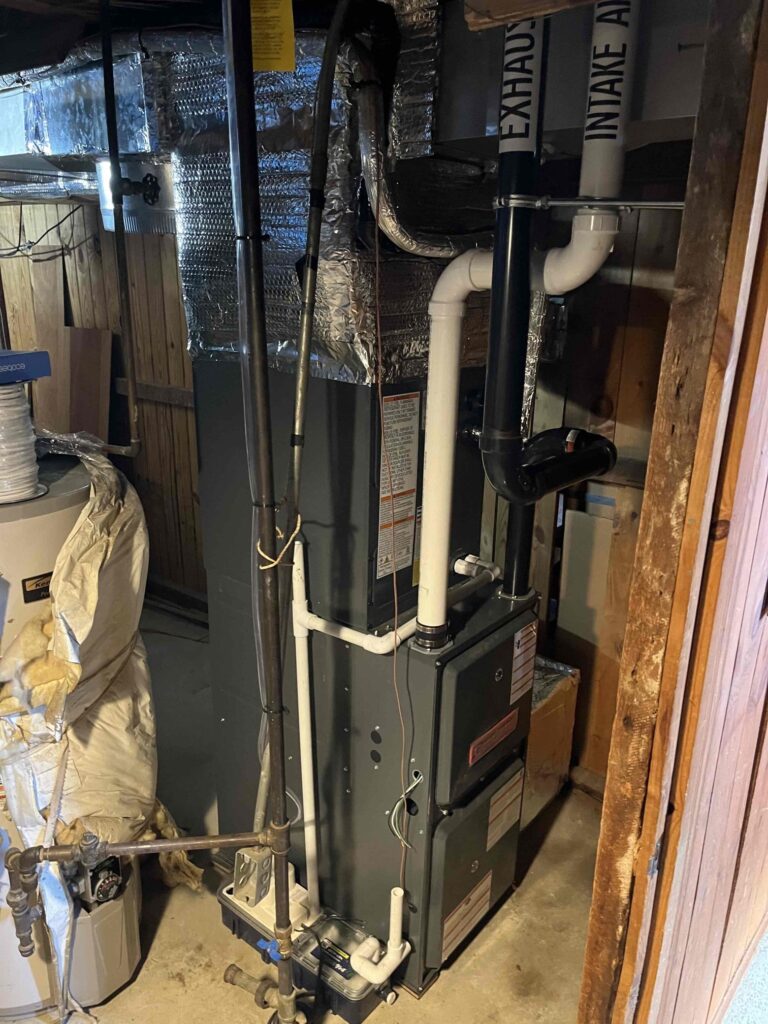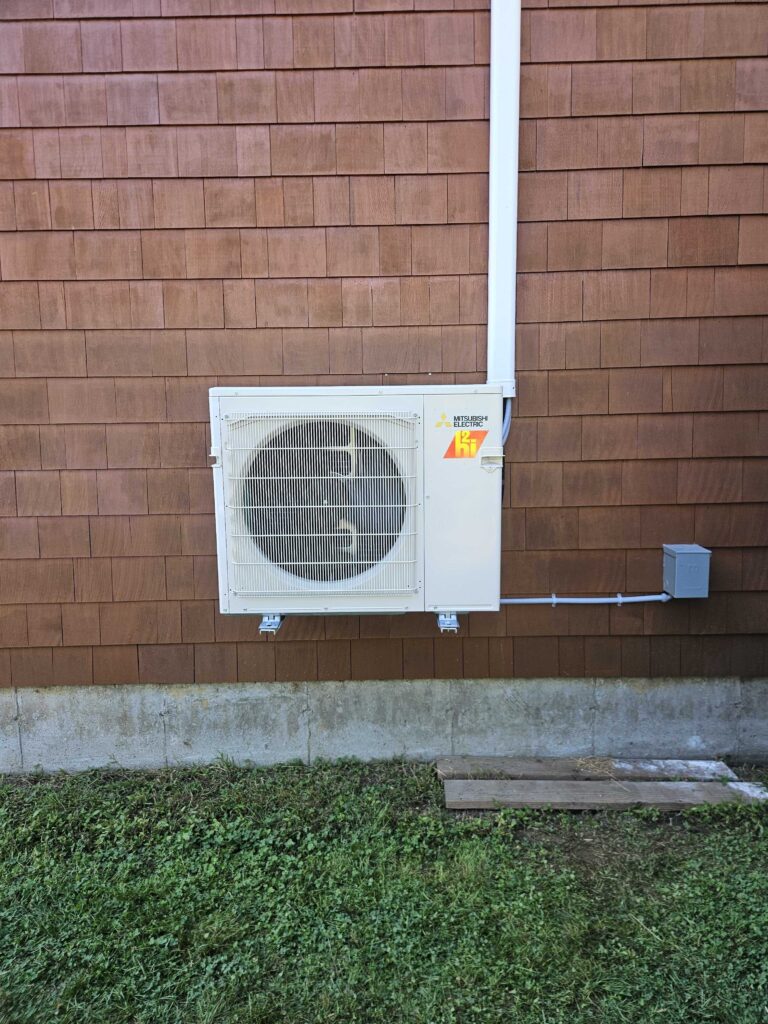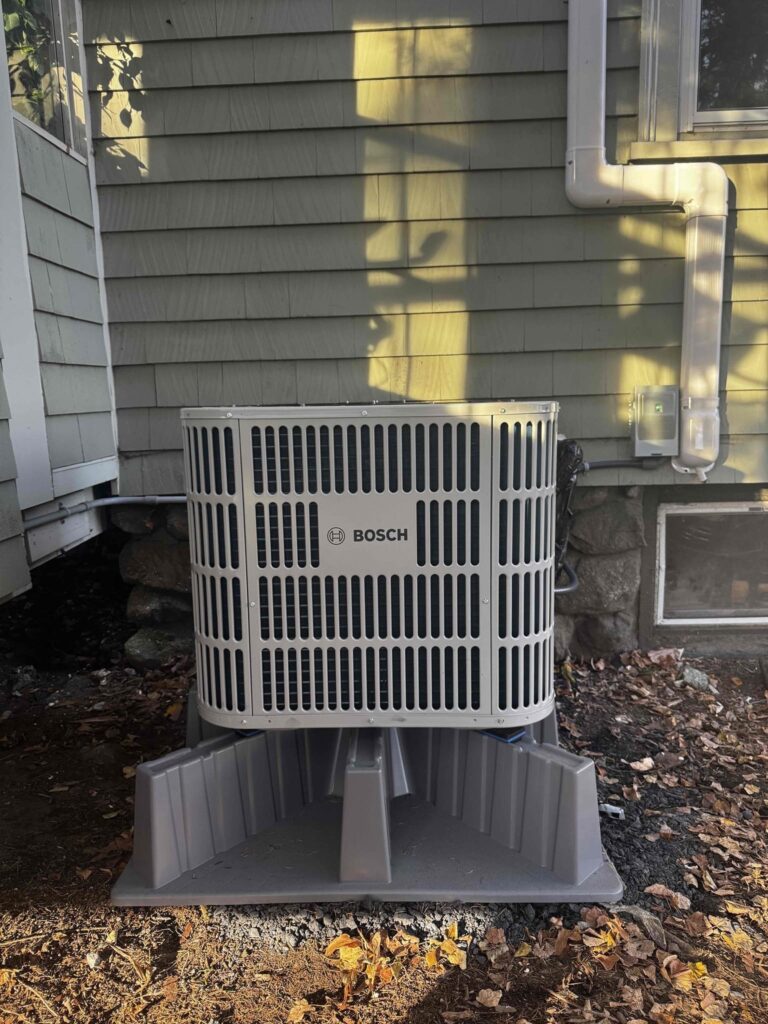According to the Department of Energy, heating and cooling account for over half of a typical household’s energy use. But how many watts does a heat pump use?
Understanding this is important for managing energy consumption and reducing utility bills. Let’s explore the factors influencing heat pump electricity use, typical wattage ranges, and strategies to enhance efficiency.
Table of Contents
ToggleUnderstanding Heat Pumps and Their Energy Use
Heat pumps are a popular choice for heating and cooling because they transfer heat instead of generating it. This makes them more efficient than traditional heating systems. Their energy consumption varies based on the type of heat pump, its operation, and how it compares to other heating options.
- Types of Heat Pumps
- How They Work
- Energy Use Compared to Other Systems
Types of Heat Pumps
There are three main types of heat pumps:
- Air-source
- Ground-source
- Water-source
Air-source heat pumps are the most common for residential use. They pull heat from the air outside and transfer it inside. These systems use electricity to power a compressor, which moves heat rather than creating it.
Ground-source heat pumps, also known as geothermal systems, pull heat from underground. They require less electricity to run, making them one of the most efficient options.
Water-source heat pumps work similarly but draw heat from a water source, such as a lake or pond. Their efficiency depends on the temperature and availability of water in the area.
How They Work
Heat pumps use a refrigeration cycle to move heat from one place to another. In heating mode, the system extracts heat from the air, ground, or water and releases it inside.
The process uses much less electricity than traditional electric heaters, which generate heat directly. The compressor plays a key role, increasing the temperature of the refrigerant and allowing the heat to be transferred efficiently. The reversing valve allows the system to switch between heating and cooling modes, making heat pumps a year-round solution.
Energy Use Compared to Other Systems
Heat pumps often use less energy than other heating systems. Electric resistance heaters, such as baseboard units or space heaters, consume much more electricity because they generate heat rather than transfer it.
Gas furnaces burn fuel to produce heat, making them more costly to run in areas with high gas prices. Heat pumps (particularly high-efficiency models) provide the same warmth while using far less electricity. The lower energy consumption makes them a more cost-effective and sustainable heating solution.
How Many Watts Does a Heat Pump Use?
The amount of electricity a heat pump uses depends on its size, efficiency rating, and the conditions in which it operates.
To better understand how many watts a heat pump uses, it helps to look at typical wattage ranges, efficiency ratings, and how climate affects power consumption:
- Typical Wattage Ranges
- SEER and HSPF Ratings
- Electricity Consumption Based on Climate
Typical Wattage Ranges
The wattage of a heat pump can vary depending on its type and size. A small residential unit may use between 1,000 and 3,500 watts, while a larger system could require 4,000 to 8,000 watts.
Air-source heat pumps tend to use more energy in extreme temperatures, especially in winter. Ground-source heat pumps usually run more efficiently, using less power overall. Variable-speed models adjust their power use based on demand, reducing consumption compared to single-speed units.
SEER and HSPF Ratings
Efficiency ratings have a direct impact on heat pump electricity use. The Seasonal Energy Efficiency Ratio (SEER) measures cooling efficiency while the Heating Seasonal Performance Factor (HSPF) rates heating efficiency.
A higher SEER or HSPF means the system uses less electricity to provide the same level of heating or cooling. Many modern heat pumps come with efficiency ratings that reduce operating costs, making them a better long-term investment for lowering energy consumption.
Electricity Consumption Based on Climate
The local climate plays a big role in the energy consumption of heat pumps. In colder regions, air-source heat pumps work harder to extract heat from the air, leading to increased power use.
When temperatures drop too low, some systems rely on backup electric resistance heating, which significantly raises electricity consumption. In milder climates, heat pumps run more efficiently and require fewer watts to maintain indoor comfort. Proper insulation and home efficiency improvements can help reduce the impact of outdoor temperatures on energy use.
How to Reduce Heat Pump Energy Consumption
A heat pump can provide efficient heating and cooling, but certain steps can help lower electricity use even more. Small changes add up over time, leading to lower utility bills and improved heat pump efficiency:
- Regular Maintenance
- Proper Sizing
- Smart Thermostats
- Improved Insulation
Regular Maintenance
Routine maintenance keeps a heat pump running at its best. A dirty air filter forces the system to work harder, increasing electricity use. Replacing or cleaning the filter every few months improves airflow and efficiency.
Dust and debris can also build up on the outdoor coil, reducing the heat pump’s ability to transfer heat. A quick rinse with a hose can help keep it clean. Checking refrigerant levels and ensuring there are no leaks in the system prevents energy loss and keeps performance steady.
Proper Sizing
A heat pump that is too small for a home will run constantly, struggling to keep the space comfortable. It leads to higher energy use and more wear on the system.
A unit that is too large will cycle on and off frequently, making it inefficient. A properly sized heat pump operates within its ideal range, using the right amount of power without excessive strain. An HVAC professional can calculate the correct size based on the home’s square footage, insulation, and climate conditions.
Smart Thermostats
A programmable thermostat helps regulate heating and cooling without unnecessary energy use. Setting lower temperatures at night or when no one is home prevents the system from running when it is not needed.
Some smart thermostats learn user habits and adjust settings automatically. Others can be controlled remotely, allowing homeowners to make adjustments from a smartphone. These small changes help reduce heat pump electricity use without sacrificing comfort.
Improved Insulation
A well-insulated home makes it easier for a heat pump to maintain a steady temperature. Gaps around windows and doors let warm air escape, forcing the system to work harder.
Sealing leaks and adding insulation in attics and walls helps trap heat inside, reducing the energy consumption of heat pumps. Even simple solutions, like using thermal curtains or weather stripping, can help lower electricity use and improve energy efficiency. Keeping indoor air from escaping allows the heat pump to work more efficiently, reducing heating costs over time.
Cost of Running a Heat Pump Based on Energy Use
The cost of running a heat pump depends on how much electricity it uses and the price of electricity in a given area. A heat pump that runs efficiently can lower monthly heating and cooling expenses, but energy use varies based on climate, home insulation, and system maintenance.
To estimate costs, it helps to break down power consumption by the hour, the month, and ways to lower expenses over time.
- Average Cost Per Hour
- Monthly Costs
- Ways to Lower Costs
Average Cost Per Hour
A heat pump’s hourly cost depends on its wattage and the local price of electricity. If a system uses 3,000 watts per hour and electricity costs $0.13 per kilowatt-hour, the cost would be about $0.39 per hour.
A larger unit using 6,000 watts would cost around $0.78 per hour under the same electricity rates. Variable-speed models tend to run at lower wattages for longer periods, reducing hourly spikes in energy use.
Monthly Costs
Monthly costs depend on how often the heat pump runs. If a system operates for six hours a day at 3,000 watts, the total energy use would be about 540 kilowatt-hours per month.
At an electricity rate of $0.13 per kilowatt-hour, that would add up to about $70 per month. In colder months, when the system runs more frequently, costs can increase. Homes with poor insulation or extreme outdoor temperatures may see bills closer to $150 per month or more.
Ways to Lower Costs
There are ways to reduce heat pump electricity use and lower heating costs. Adjusting the thermostat by just a few degrees can make a big difference. A heat pump set to 68°F in winter instead of 72°F will run less often and consume less power.
Using energy-efficient settings and scheduling temperature adjustments based on daily routines can help reduce energy consumption. Regular maintenance, such as cleaning filters and checking refrigerant levels, ensures the system runs efficiently without overworking. Improving home insulation and sealing air leaks can also lower overall energy consumption, reducing the monthly cost of running a heat pump.
Efficient Heating Solutions
Heat pumps provide an efficient way to heat and cool homes while using less electricity than many traditional systems. So, how many watts does a heat pump use?
It depends on factors like size, efficiency, and climate. Choosing the right system and maintaining it properly helps reduce energy costs and improve performance.
Endless Energy has provided energy-efficient home services in Massachusetts since 1980. As a Mass Save® certified, family-run company with an A+ BBB rating, we offer heating, cooling, plumbing, electrical, and insulation services. As an LGBTQ owned business, we embrace diversity and maintain a motivated, skilled team.
Get in touch today to find out how we can help with your heat pump issues!
